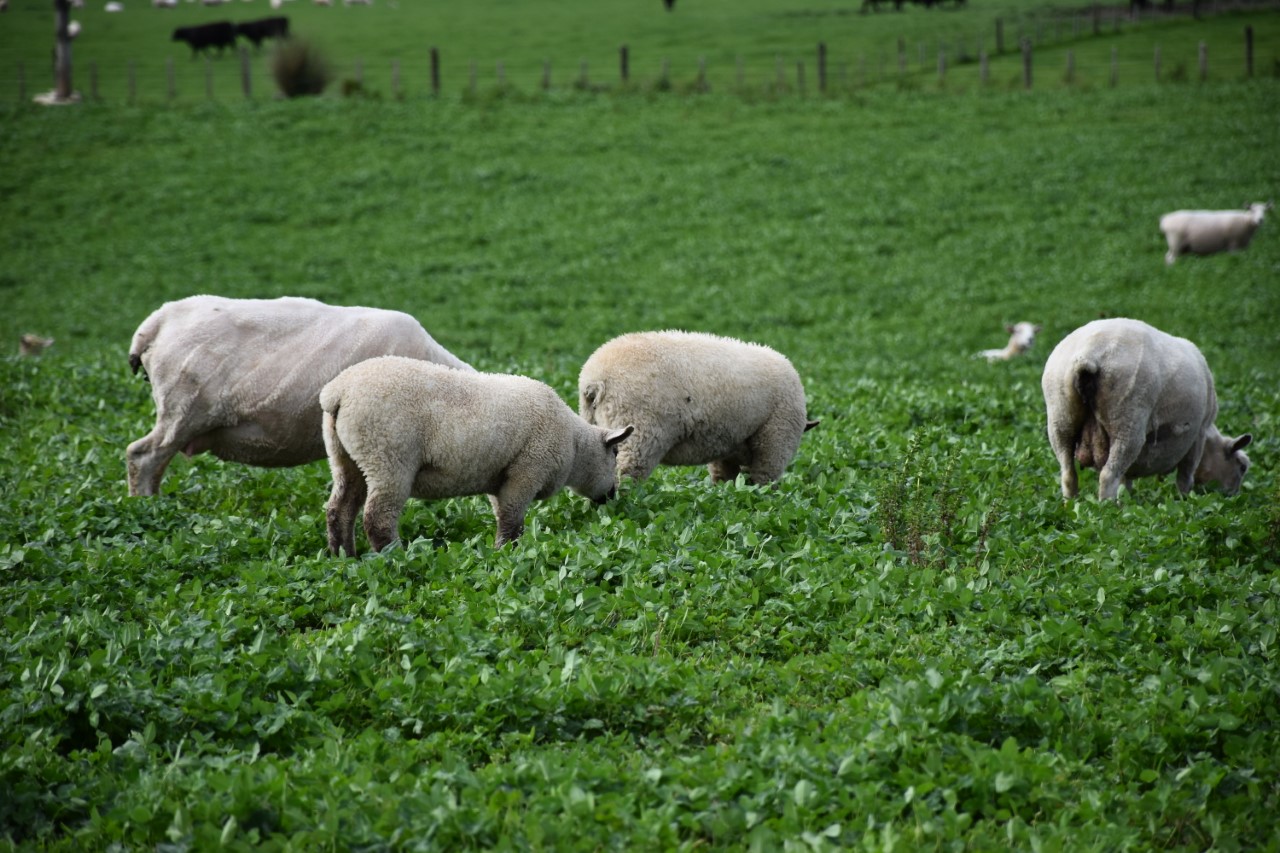The recent rain across the country may cause pastures to green up. Stay off them if you want to have feed in spring. At this time of year it is important to get a canopy of green leaves covering the ground extensively before winter temperatures cause growth rates to slow. For dryland farmers the rain may also allow the sub clover to strike. This will appear as small seedlings that then produce a first leaf that looks like an inverted spade (♠, creatively known as a “spade leaf”) in a deck of cards and second one that looks like a club in a deck of cards (♣, creatively referred to as a “trifoliate leaf”). Stay off these pastures until they have 4-5 club type leaves then lightly graze with cattle to remove any grass that is beginning to dominate. If you have dry/dead pasture with little legume – you may not have time to fully prepare and sow as seedbed before winter temperature restrict growth. In this case you could try to inject protein by direct drilling 10 kg/ha of sub clover (e.g. 5 kg of a large leaf sub like ‘Antas’ or ‘Woogenellup’ and 5 kg of a smaller leaf like ‘Denmark’) at this time of year whatever you can get would be better than nothing. The sub will strike and the provide legumes based feed in spring provided you manage it correctly through winter.
For lucerne – it will spring back into life with rain. It should be left now to accumulate as much herbage as possible before growth stops in e.g. late May – then graze that herbage off hard with ewes and do your winter spray a couple of weeks later. The B+LNZ lucerne text service provides reminders about that.
To our farming community and associated support industries – As an essential service we thank you on behalf of all like minded people for producing our food and continuing to keep the country afloat.
For my part I have done the science reading so you don’t have to … the science around this virus is not great. If we had done nothing the expectation was about 80,000 dead and an overwhelmed health system. We have moved quickly and early to lockdown to try and minimise overwhelming our ICU beds. A best case scenario is this is 2-3 months with restrictions and then waves of infection continuing for a couple of years – which may require further periods of relaxing then lockdown. It is unlikely we will be back to international global travel etc within 2 years. These assumption are based on a vaccine being produced – this beasty is more challenging then the flu to create a vaccine for. In short take it seriously and do your self-isolation distancing. This is the new norm for awhile yet.
For those who want the science – here is the paper I am basing my comments on: Suppression and Mitigation Strategies for Control of COVID-19 in New Zealand
